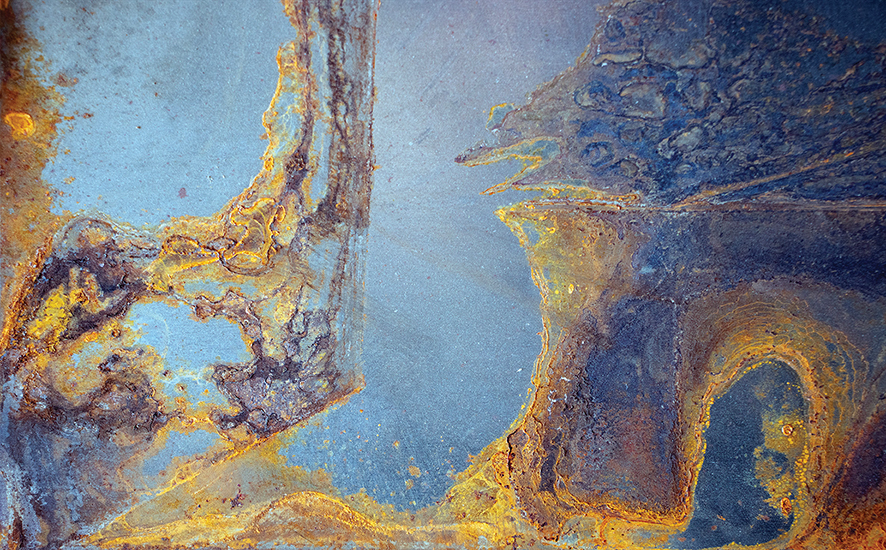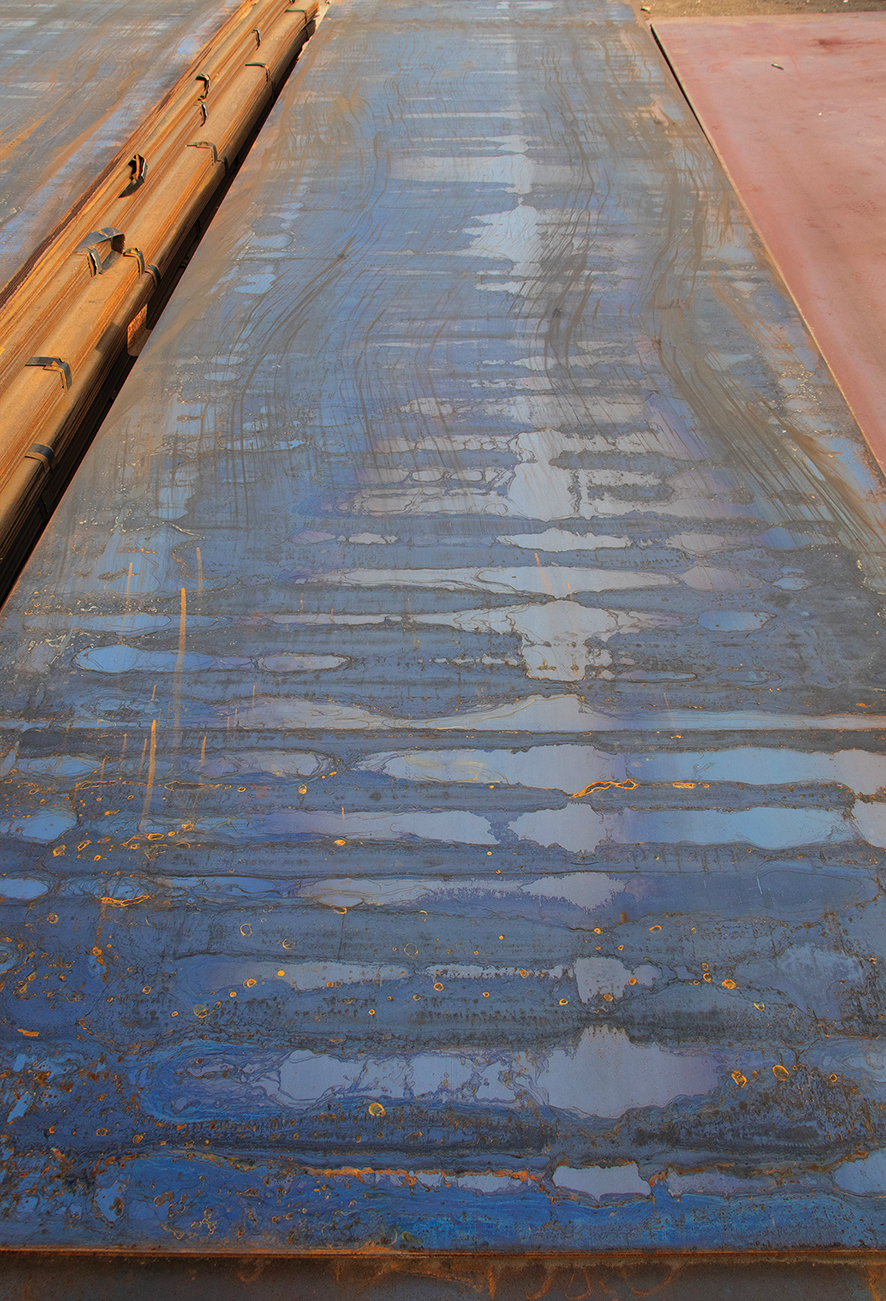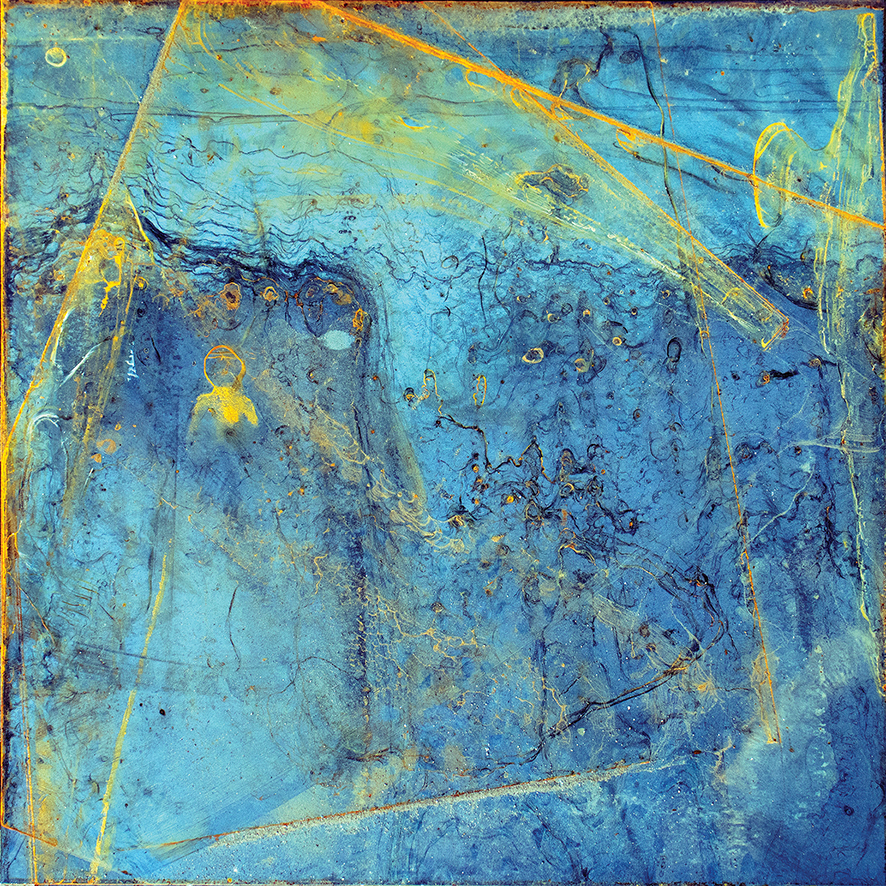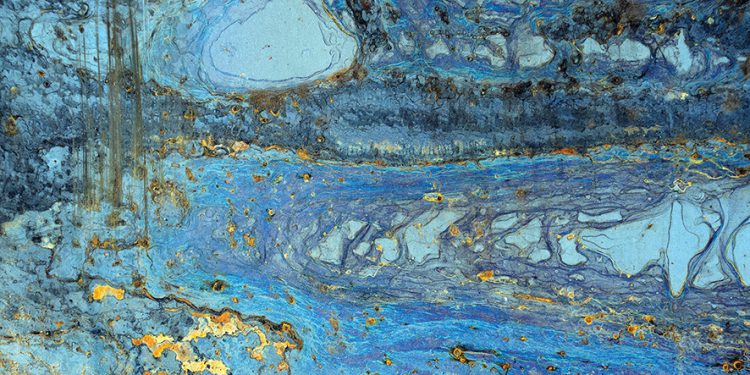It seems that a book of images of oxidized steel is in the works.
Last week, I was drawn back to the Tbilisi steelyard where I have gotten lost in surreal landscape photographs already twice. This time was my longest. There had been no rain for some time, so the steel was dry, which is important, and enough time had passed (more than half a year) for some top layers of the steel sheets to have been sold, revealing new ones underneath. I wandered in a daze, dodging my shadow when the weak sun cast it on the mostly horizontal surfaces, and once again found new inspiration everywhere.

New sheet steel is mostly bluish in tones, and any interaction with moisture of course starts this rusting, in all the warm tones of reds through yellows which jump forward off the receding cool background. So there is quite a palette on display, in almost a three-dimensional effect.
(“Oxy-gen” has Greek roots of “burn” and “birth”, a making of burning, which is chemically exactly what oxygen does. It has similar roots, in translation, in Russian: kislorod, or acid-birthing, and Georgian: zhangbadi, literally rust-birthing, and many other languages too, no doubt).
Some steel sheets I looked at were easily 8m by 2m in size, though quite thin and flexible, and about 850 GEL each to buy, I was told. One or two of them I could quite happily have bought and put on display in their glorious entirety, in a gallery. But then there’s a whole list of practicalities.

How would even you transport the monster? Rolled up, it’d likely damage its own surfaces against each other. Flat, it’s simply huge, needing a long truck bed; and how would you get it in there without any damage? These are not the usual delicate considerations for such material. Where would you even display it—what gallery would have space, even if they were as fascinated as I am? How much does it weigh? You’d need to back it with something firm, like a lot of wood framing, to make it stiff; that’d add quite a bit to its weight, making hanging even more challenging… and so on. How would you even get it into the gallery? This isn’t the Met! But it NEEDS to be seen, in all its glorious detail, from end to end! Ah well, maybe when I’m rich and famous I’ll figure out how to deal with such eccentricities. For now, just shoot some glorious bits.

The landscapes and other things I was seeing were straight out of science fiction or Salvador Dali, plus a little of Gustav Klimt. Utterly otherworldly.
Later, after processing most of the 132 images from a couple of hours’ shooting (including a few of whole sheets and the yard and its workers themselves, for context), I came across a Facebook group called Rust Art, joined, and began posting too many images. It was interesting to compare my own work with that of some of the 8000 other members, most of us with unique styles. Some people prefer rusty objects, in part or in whole, whereas I’m much more for finding concrete images and shapes in abstract places. Felt like finding my tribe, in this medium at least.
One of the group’s members also suggested a that I do a book from this work, which I’m now considering. It’ll have to be large, to show off the intricate detail, and well printed for the colors. Not cheap; I’ll need to find someone to take it on. Just another pipe dream? Time will tell.
The icing on the cake was chatting with the yard manager and workers as I was leaving. It turns out that he and my wife have the same last name! So we’re related by marriage.
BLOG by Tony Hanmer
Tony Hanmer has lived in Georgia since 1999, in Svaneti since 2007, and been a weekly writer and photographer for GT since early 2011. He runs the “Svaneti Renaissance” Facebook group, now with over 2000 members, at www.facebook.com/groups/SvanetiRenaissance/
He and his wife also run their own guest house in Etseri: www.facebook.com/hanmer.house.svaneti














